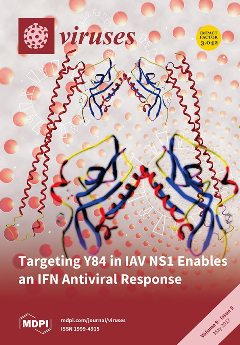Open AccessArticle
Microbial Natural Product Alternariol 5-O-Methyl Ether Inhibits HIV-1 Integration by Blocking Nuclear Import of the Pre-Integration Complex
by
Jiwei Ding, Jianyuan Zhao, Zhijun Yang, Ling Ma, Zeyun Mi, Yanbing Wu, Jiamei Guo, Jinmin Zhou, Xiaoyu Li, Ying Guo, Zonggen Peng, Tao Wei, Haisheng Yu, Liguo Zhang, Mei Ge and Shan Cen
Cited by 19 | Viewed by 7271
Abstract
While Highly Active Antiretroviral Therapy (HAART) has significantly decreased the mortality of human immunodeficiency virus (HIV)-infected patients, emerging drug resistance to approved HIV-1 integrase inhibitors highlights the need to develop new antivirals with novel mechanisms of action. In this study, we screened a
[...] Read more.
While Highly Active Antiretroviral Therapy (HAART) has significantly decreased the mortality of human immunodeficiency virus (HIV)-infected patients, emerging drug resistance to approved HIV-1 integrase inhibitors highlights the need to develop new antivirals with novel mechanisms of action. In this study, we screened a library of microbial natural compounds from endophytic fungus
Colletotrichum sp. and identified alternariol 5-
O-methyl ether (AME) as a compound that inhibits HIV-1 pre-integration steps. Time-of addition analysis, quantitative real-time PCR, confocal microscopy, and WT viral replication assay were used to elucidate the mechanism. As opposed to the approved integrase inhibitor Raltegravir, AME reduced both the integrated viral DNA and the 2-long terminal repeat (2-LTR) circular DNA, which suggests that AME impairs the nuclear import of viral DNA. Further confocal microscopy studies showed that AME specifically blocks the nuclear import of HIV-1 integrase and pre-integration complex without any adverse effects on the importin α/β and importin β-mediated nuclear import pathway in general. Importantly, AME inhibited Raltegravir-resistant HIV-1 strains and exhibited a broad anti-HIV-1 activity in diverse cell lines. These data collectively demonstrate the potential of AME for further development into a new HIV inhibitor, and suggest the utility of viral DNA nuclear import as a target for anti-HIV drug discovery.
Full article
►▼
Show Figures






